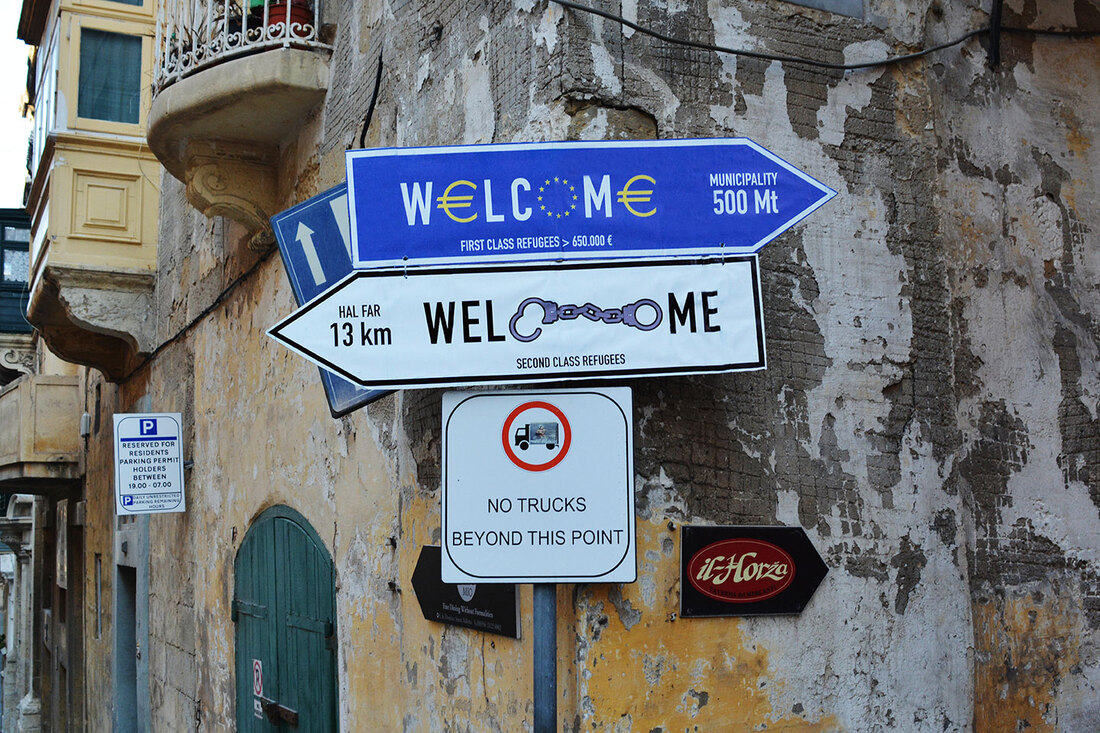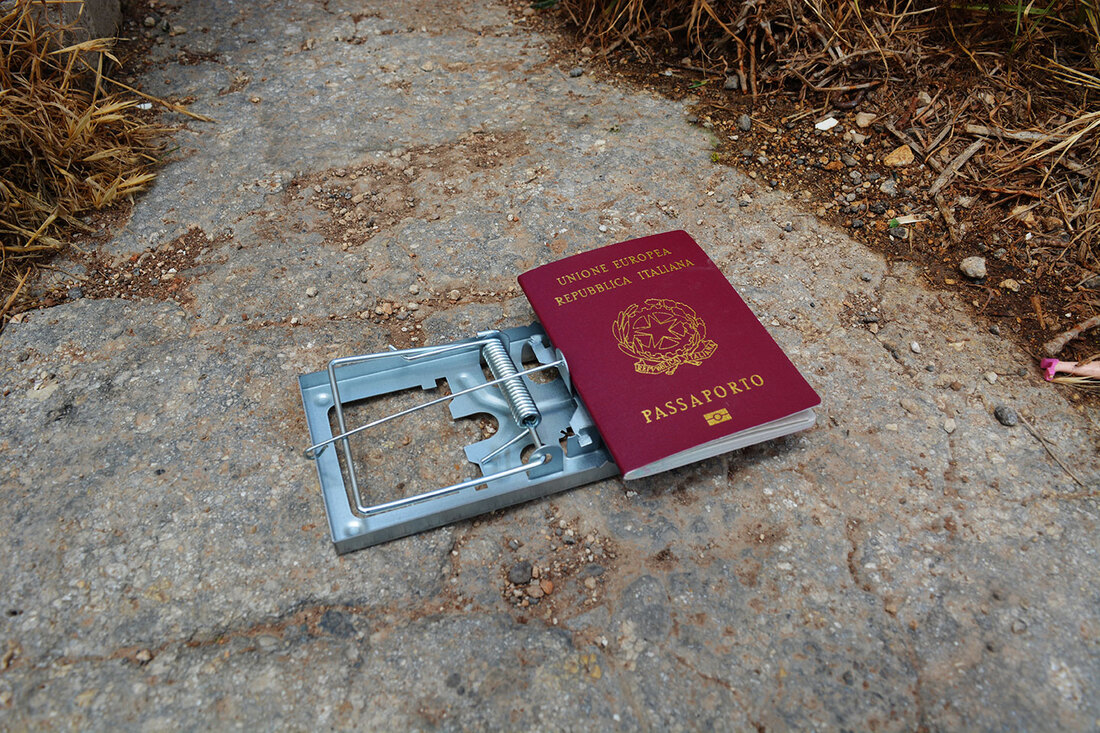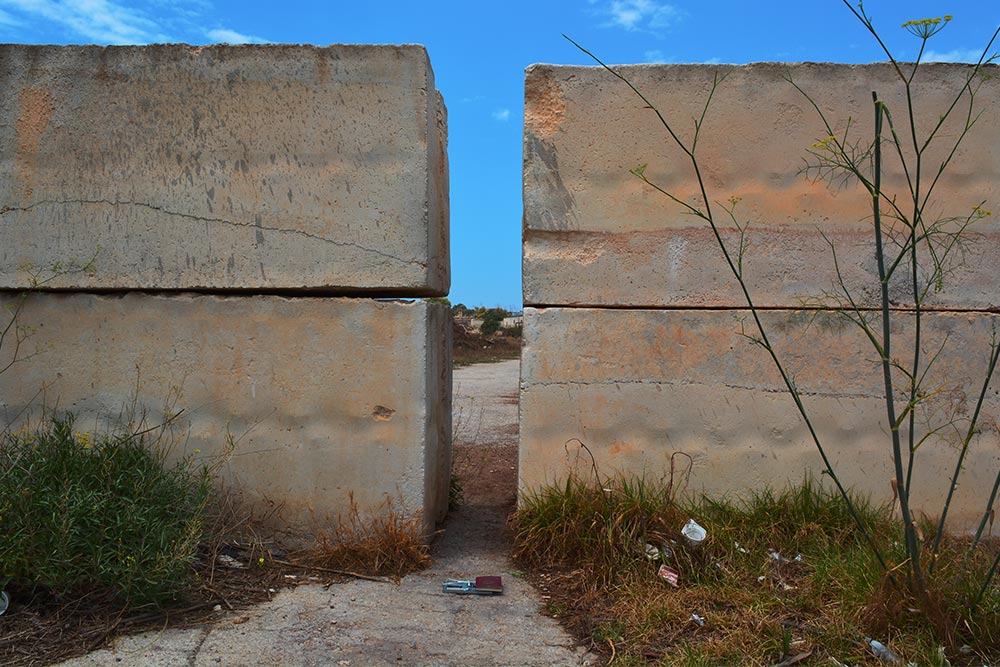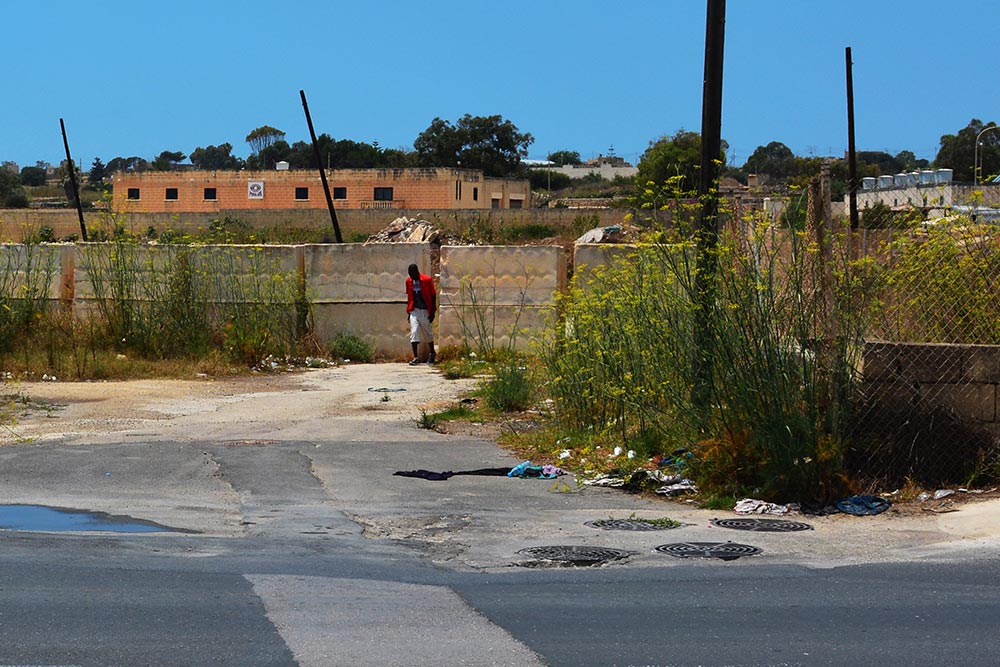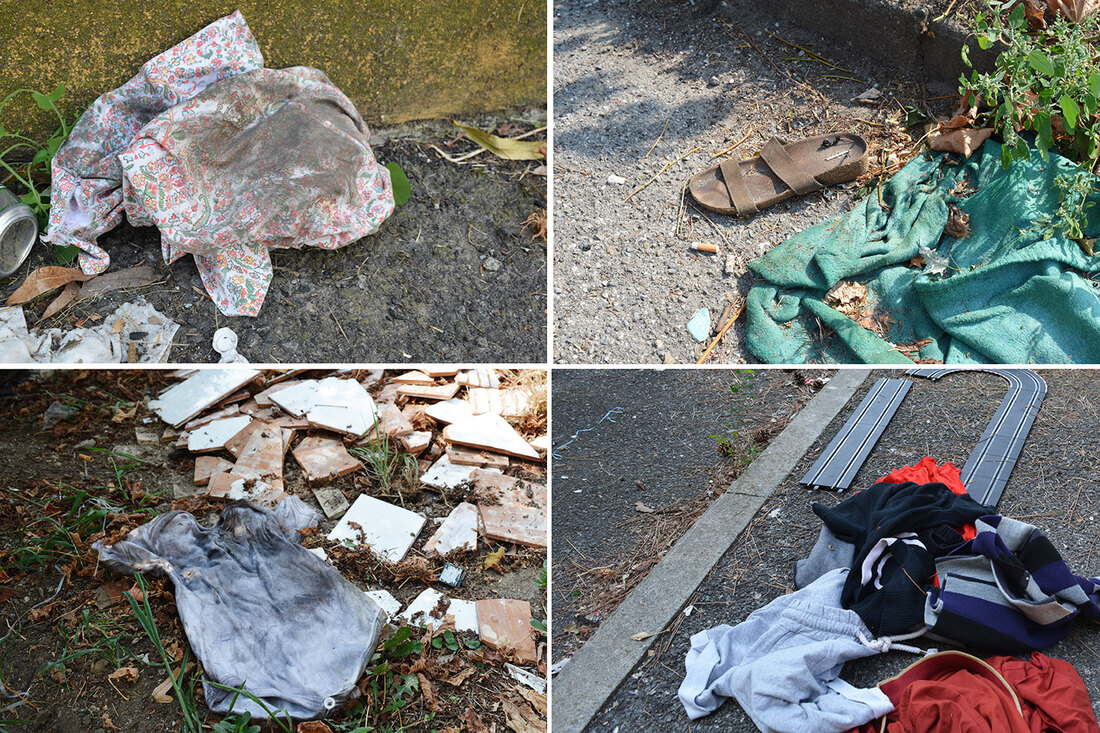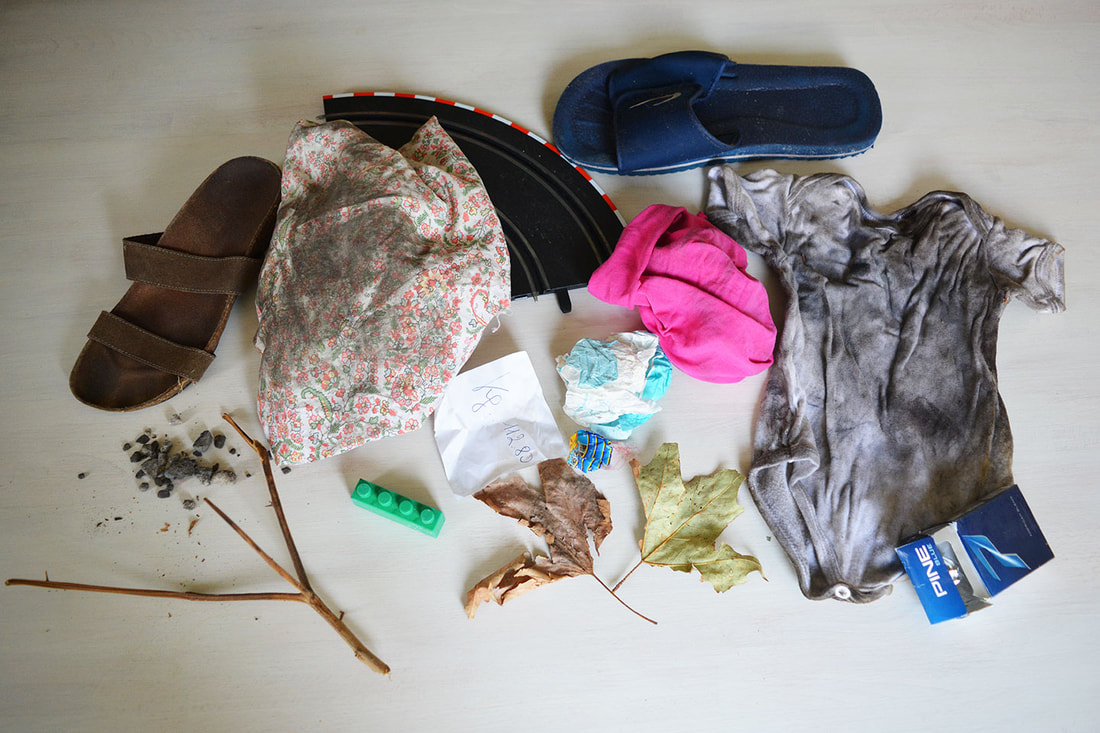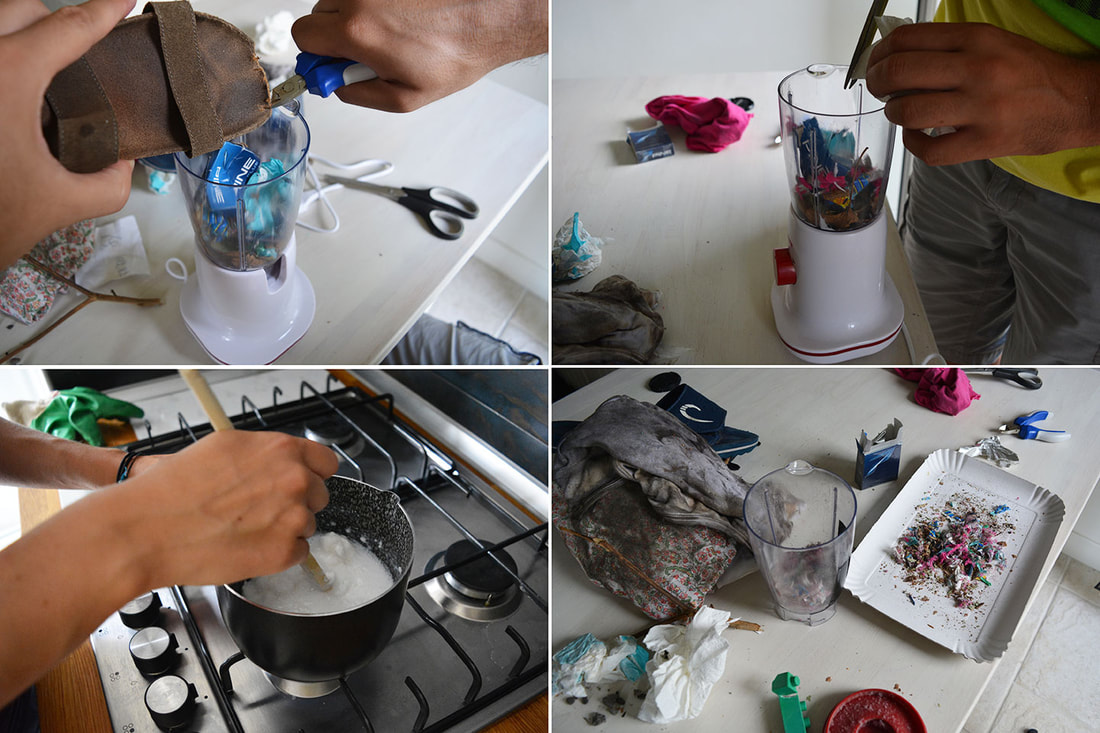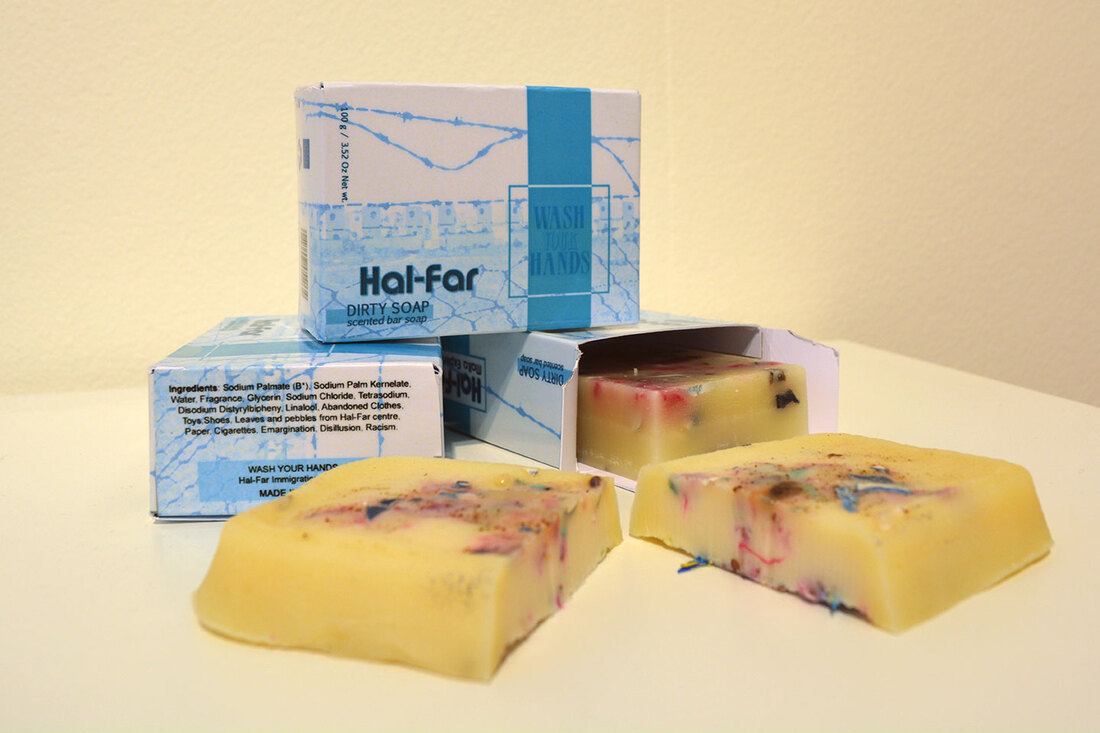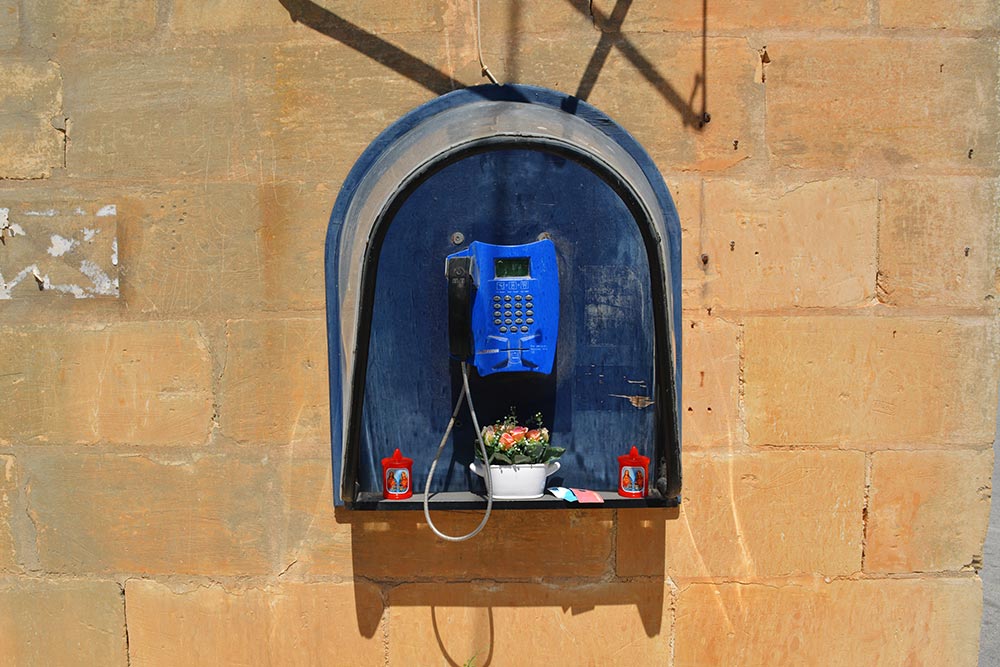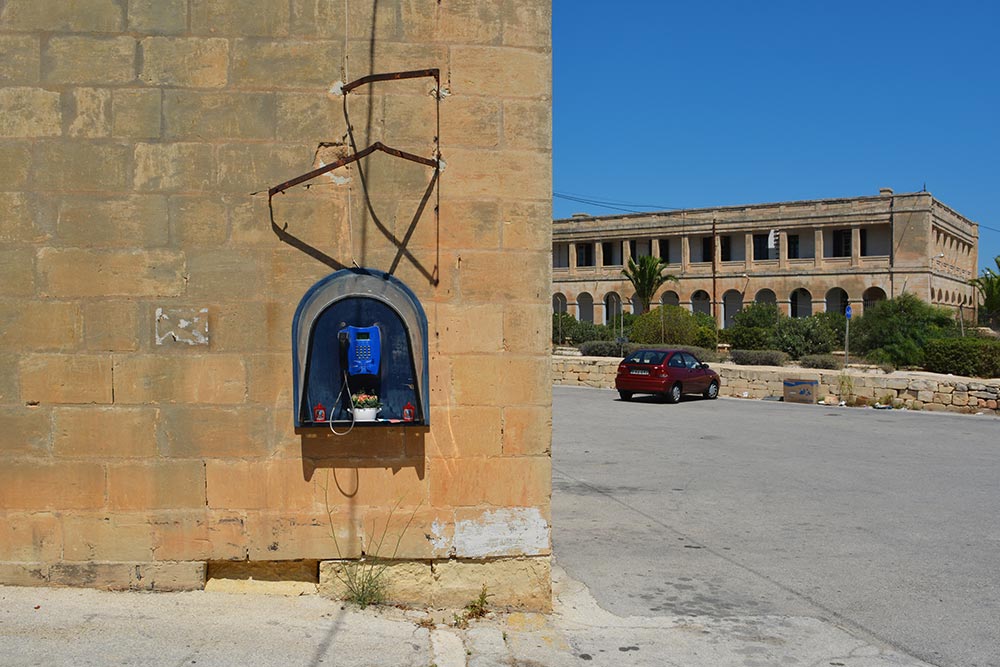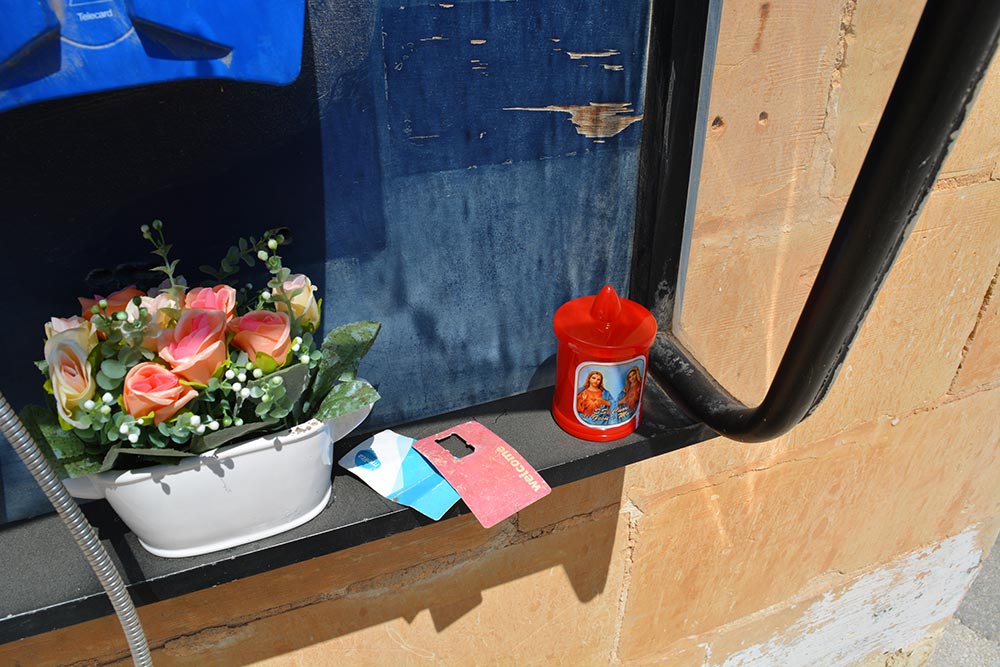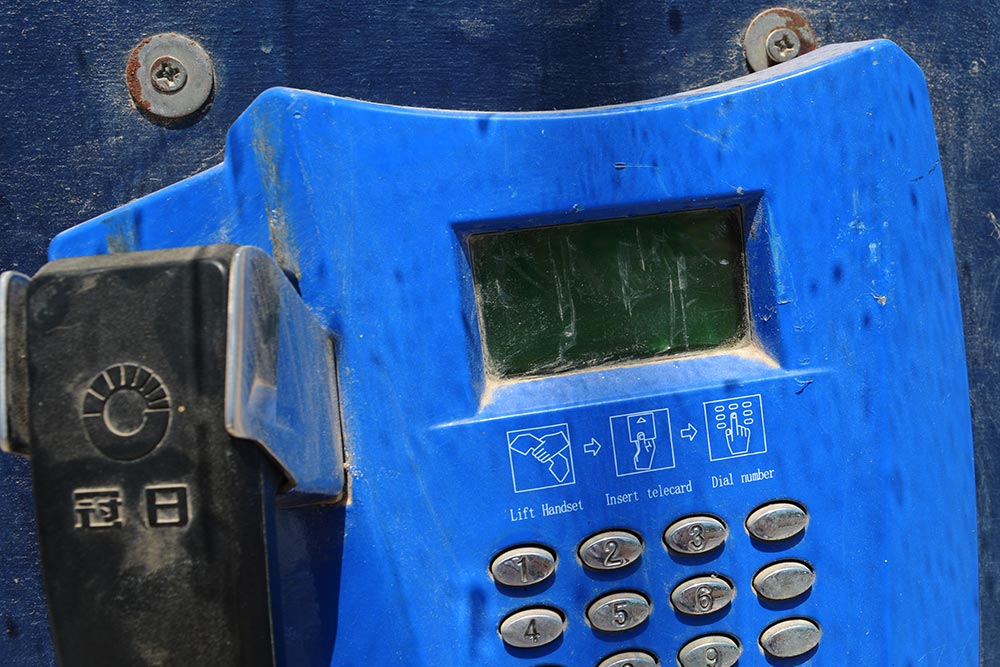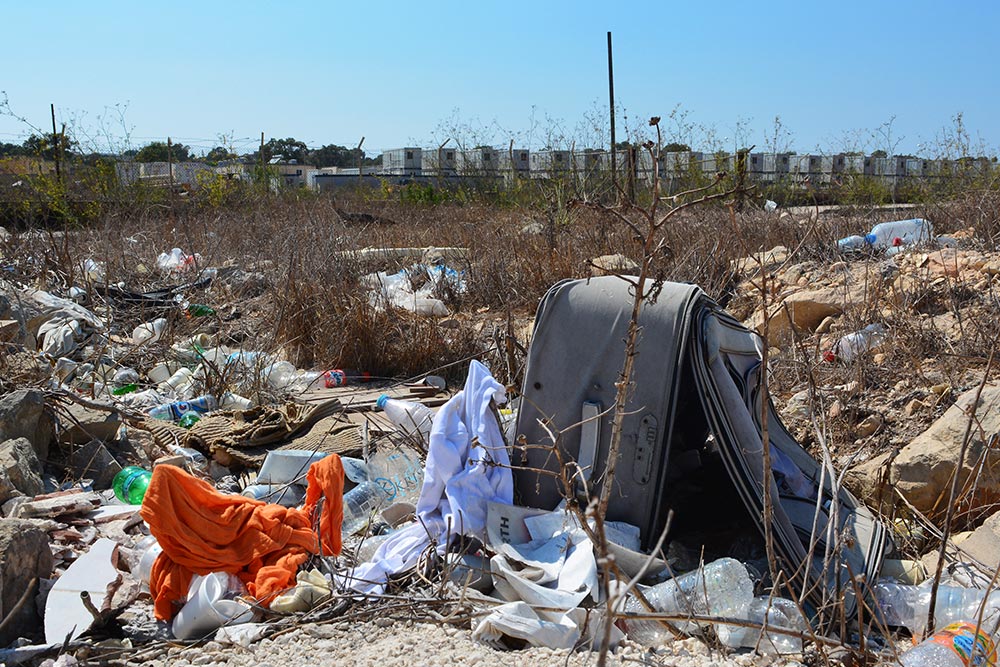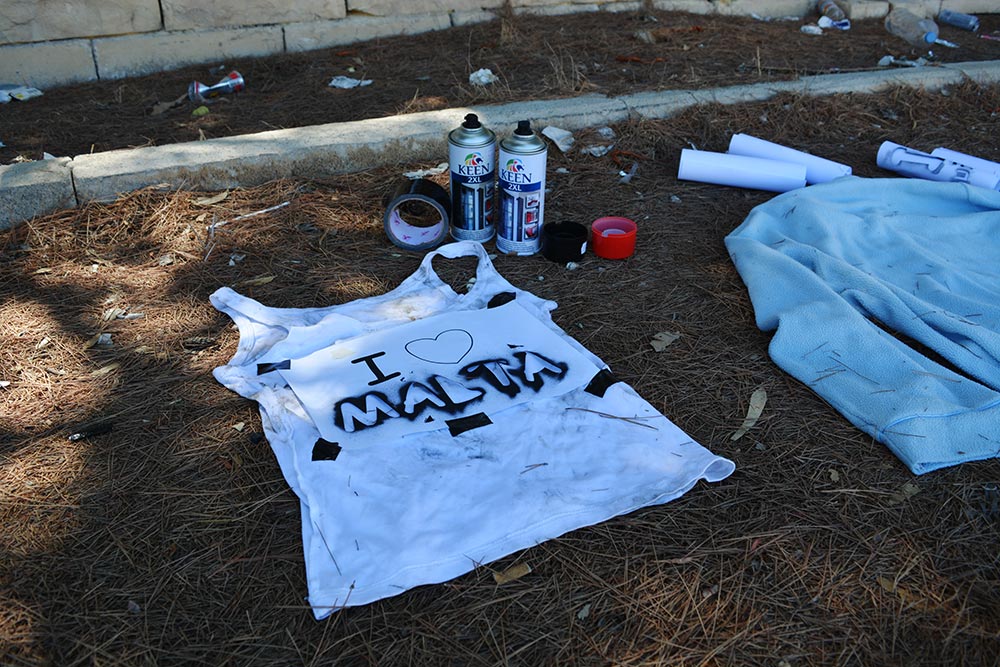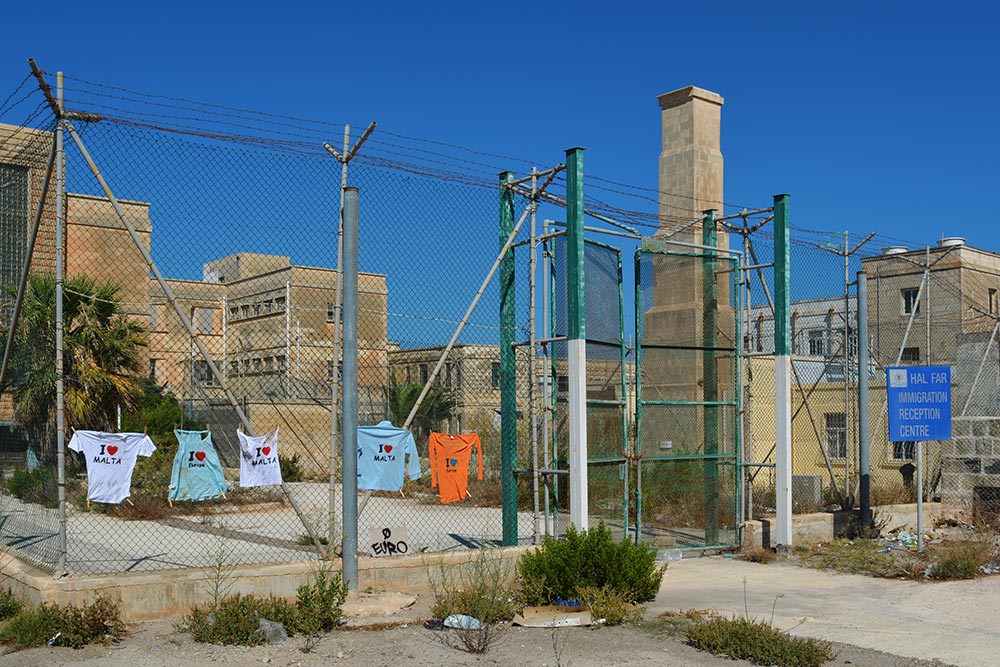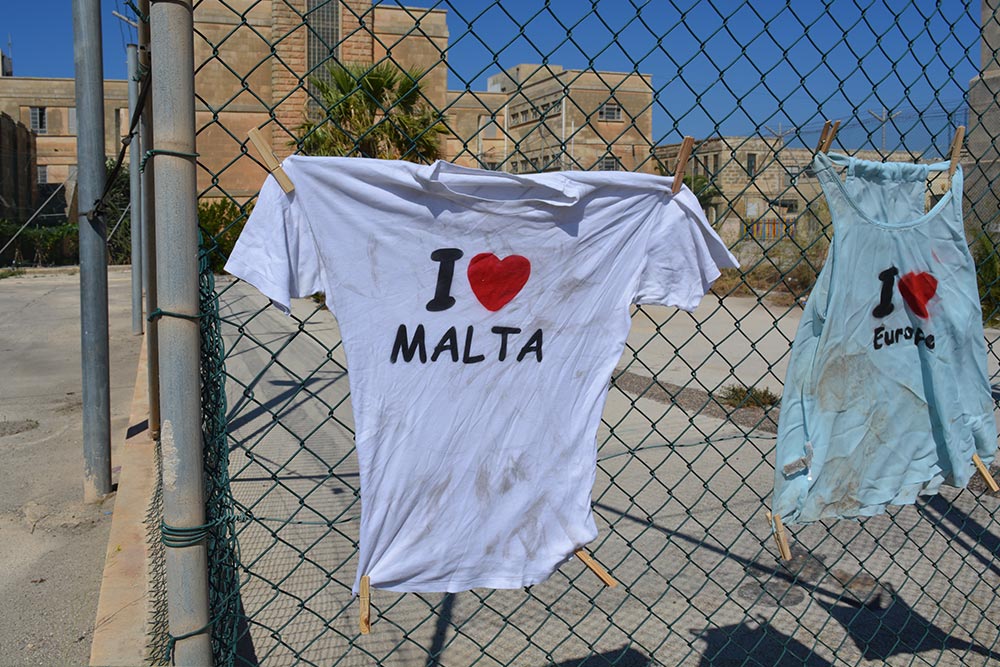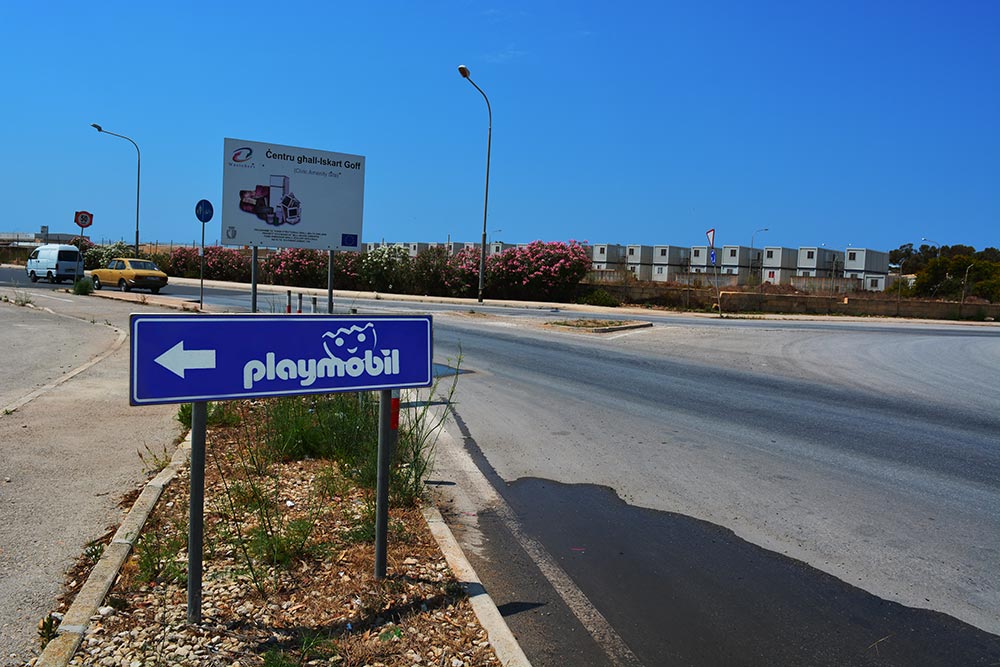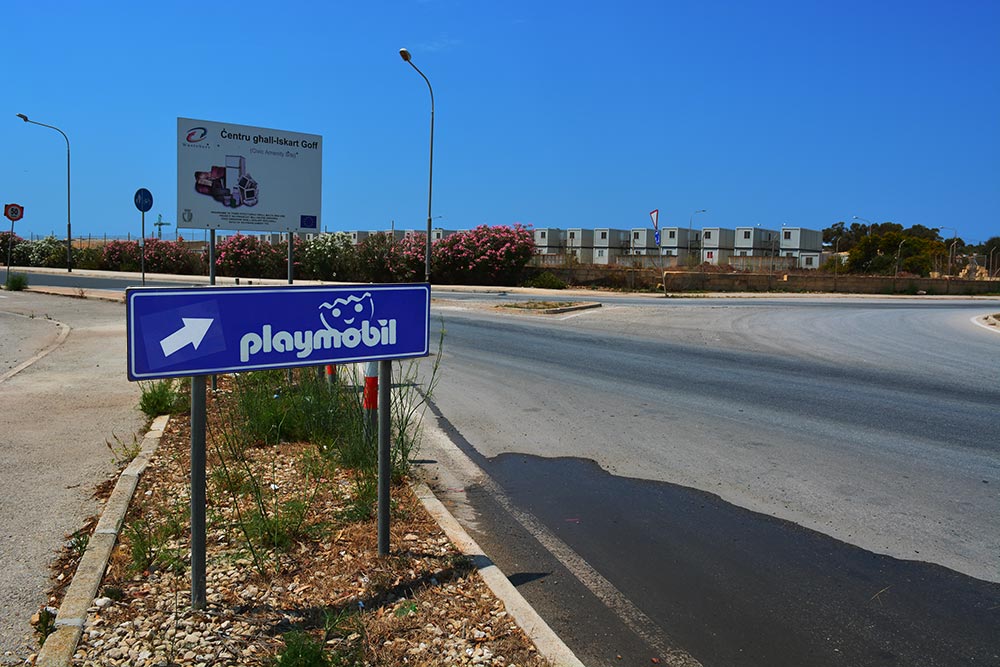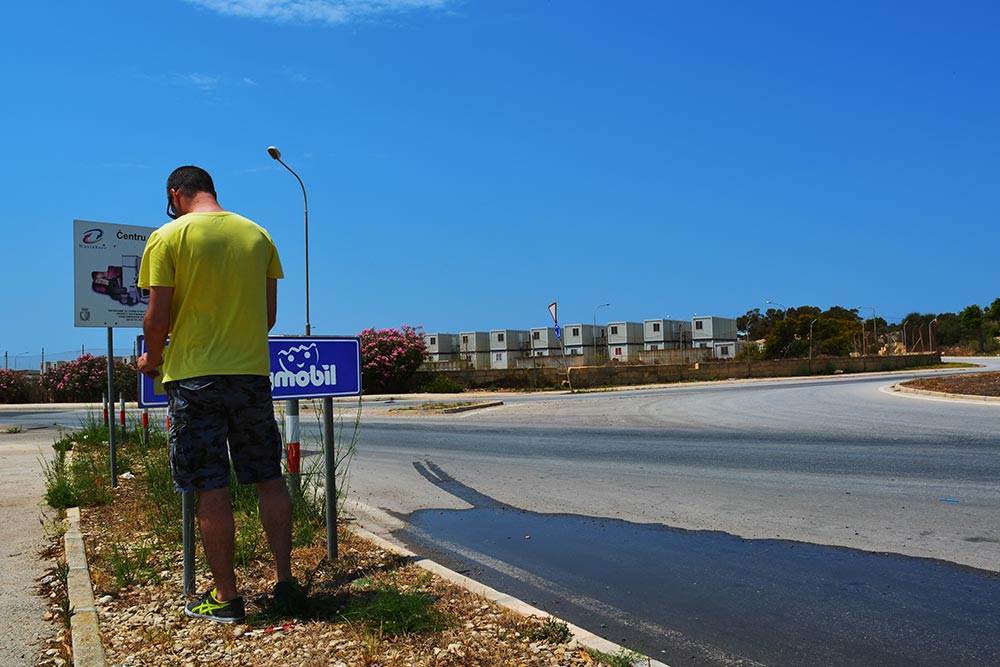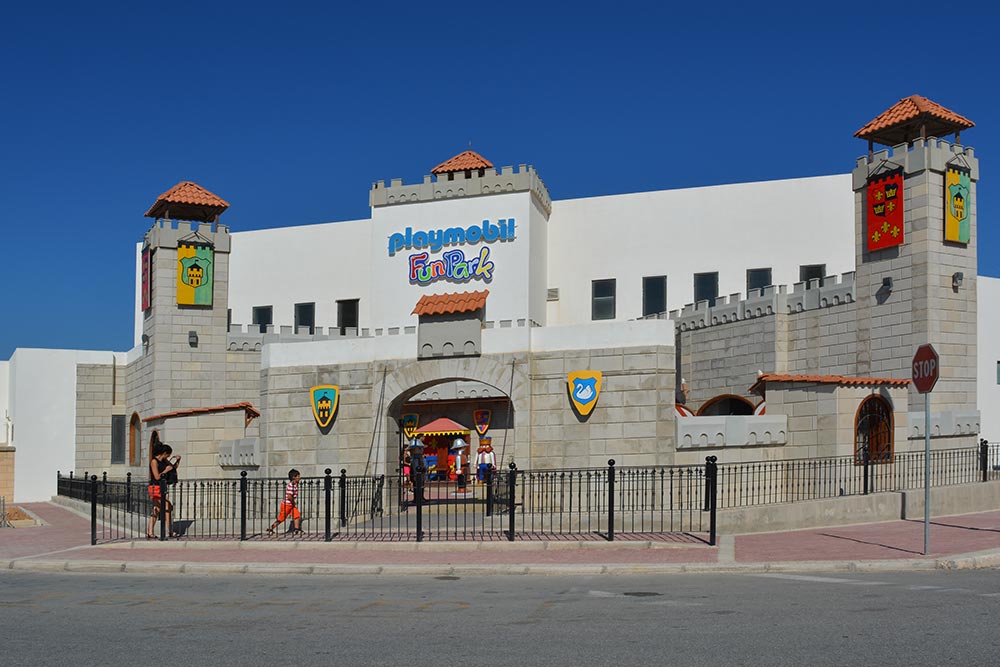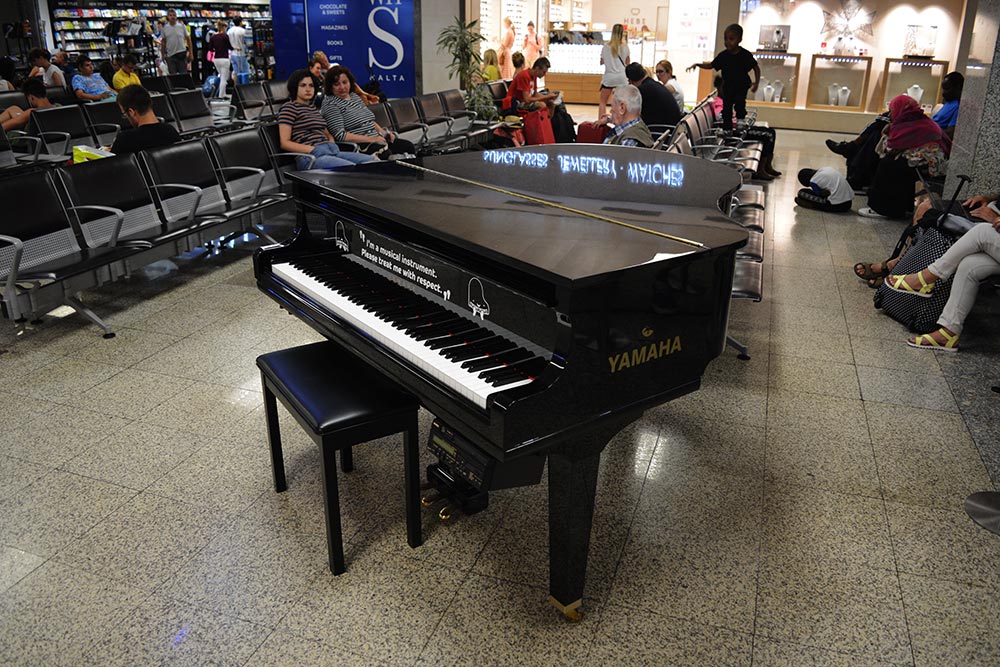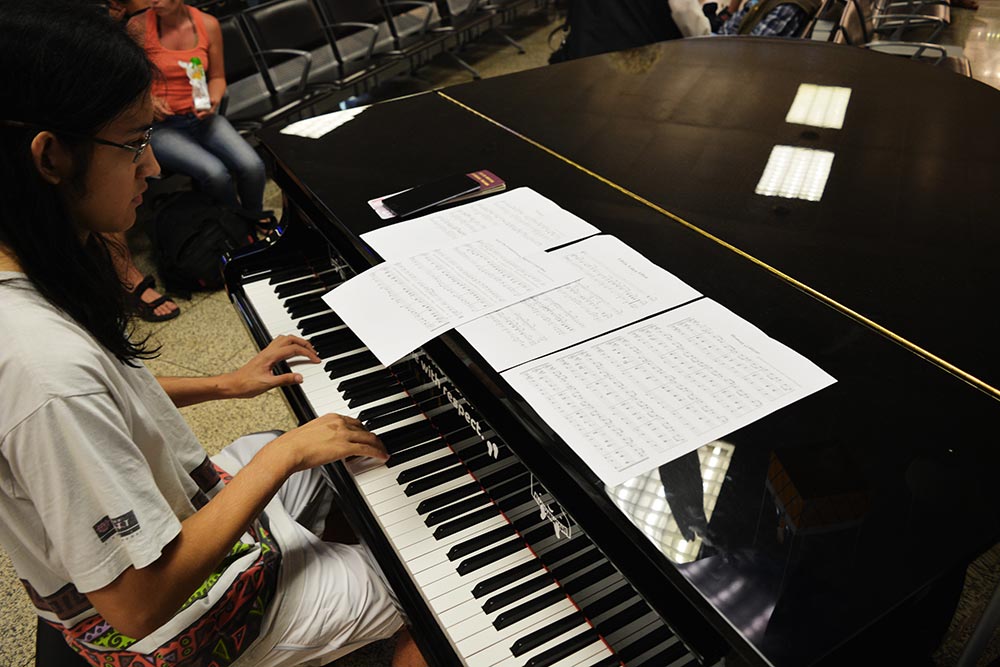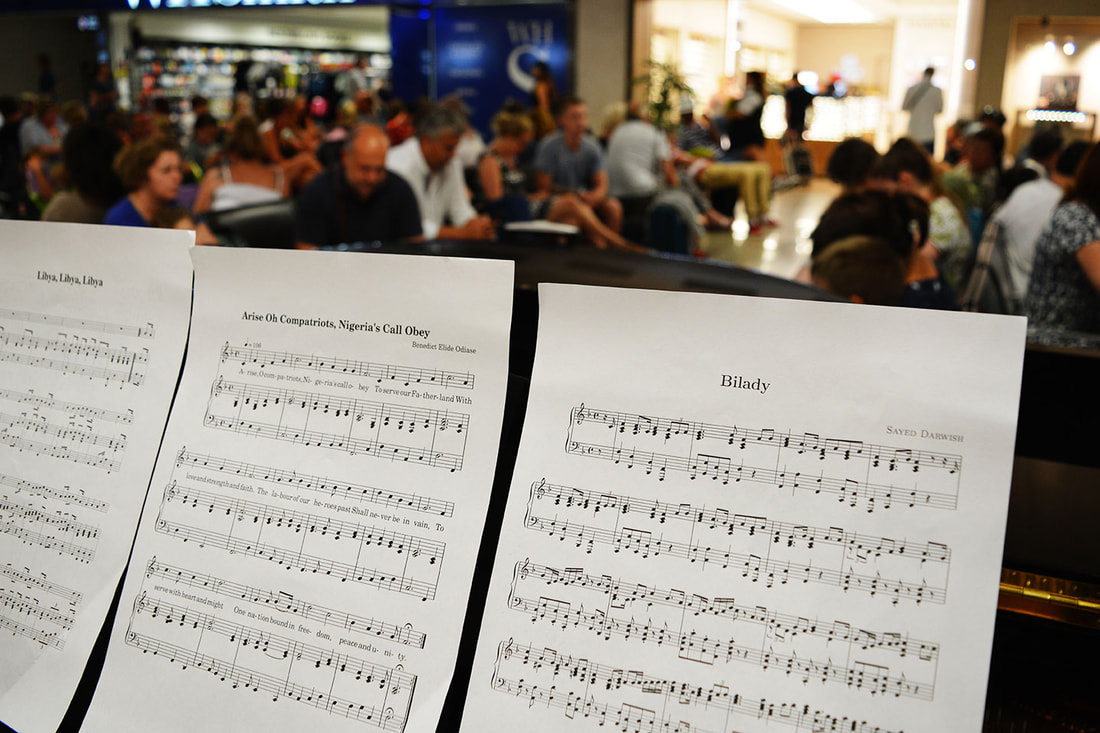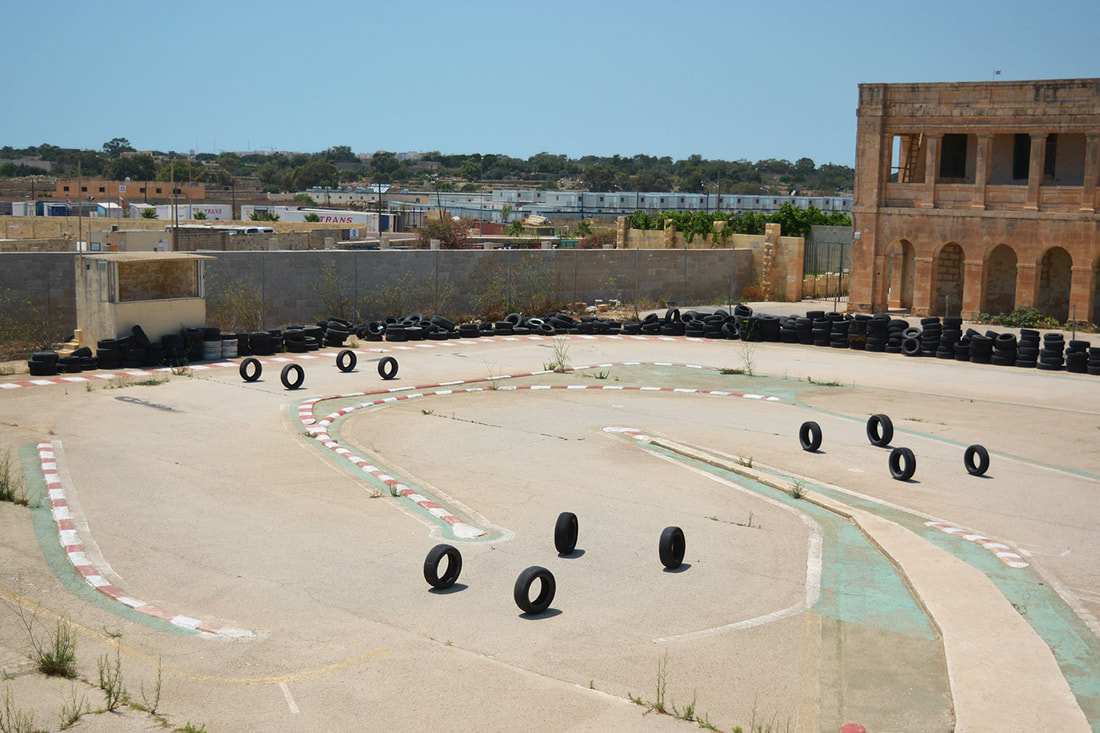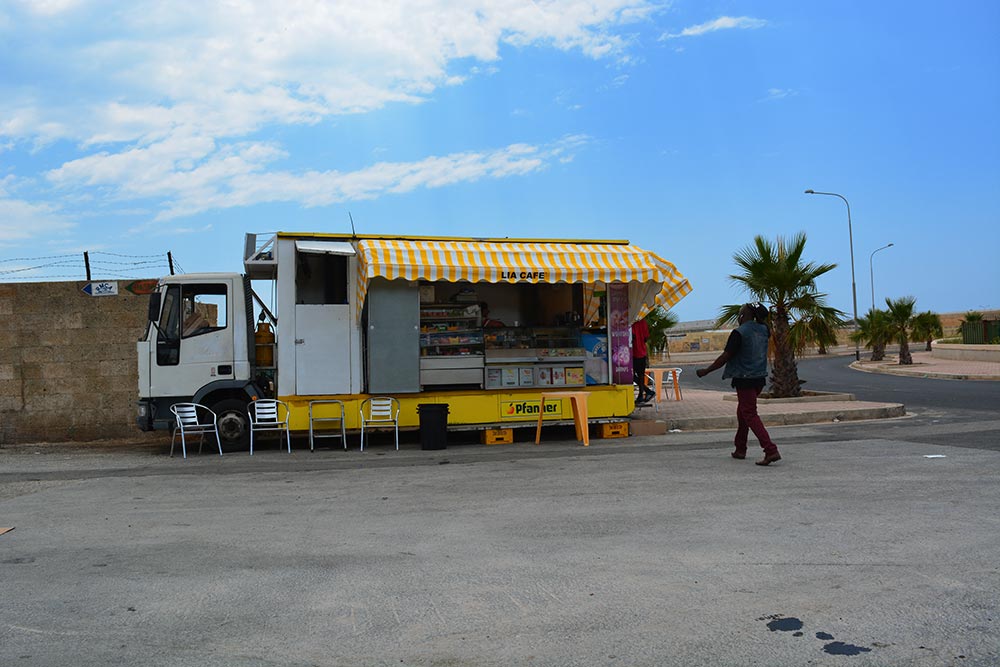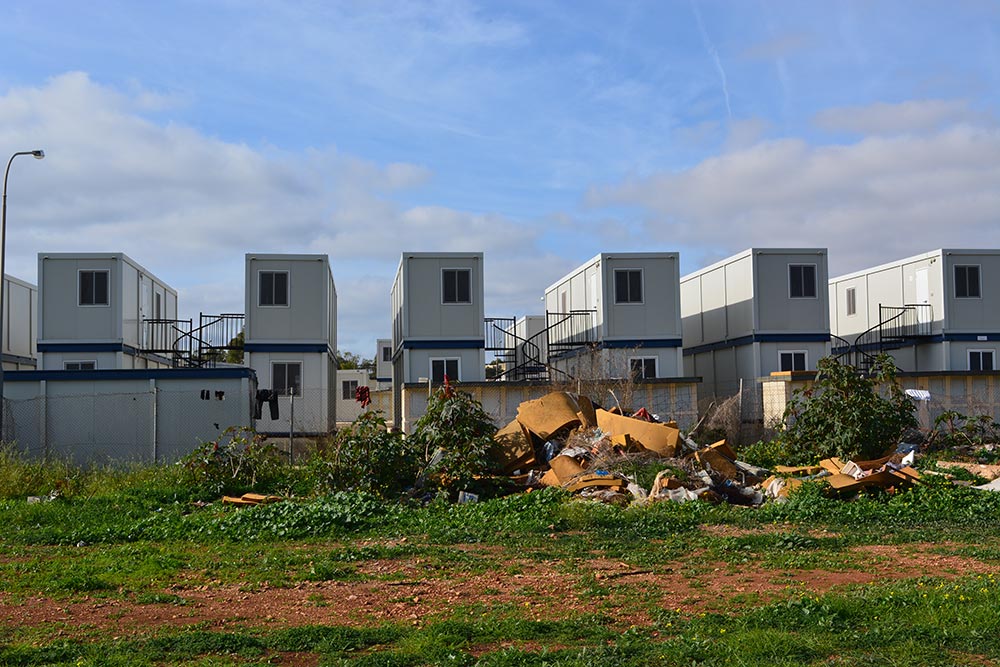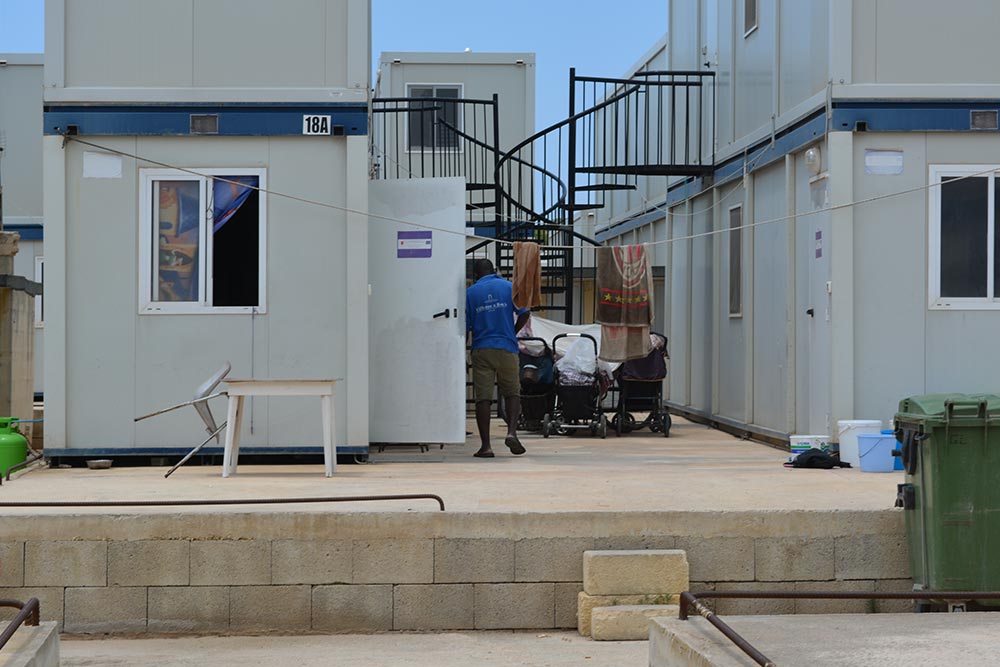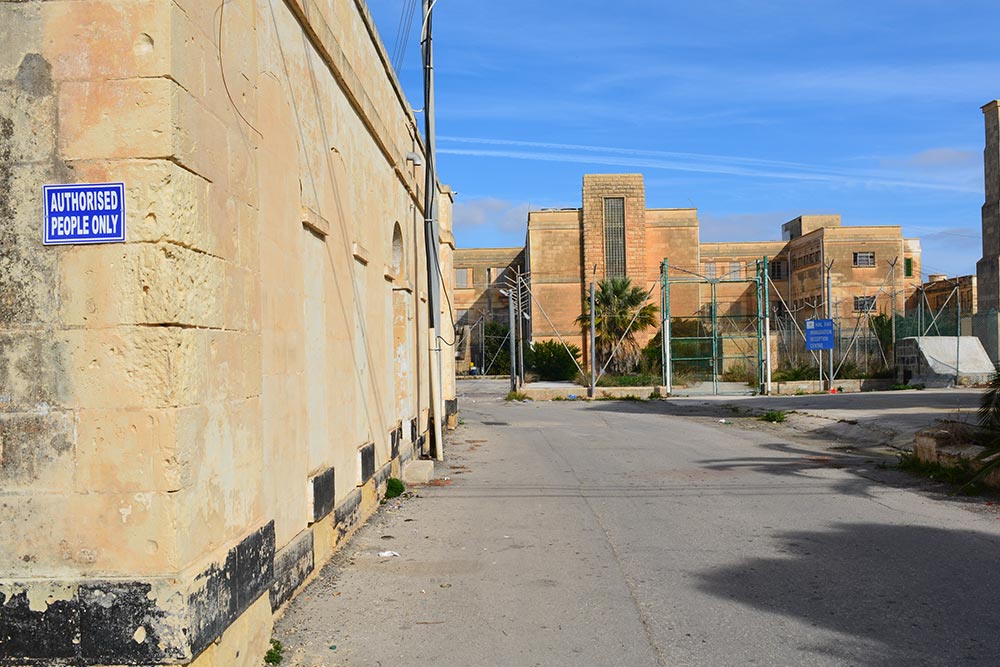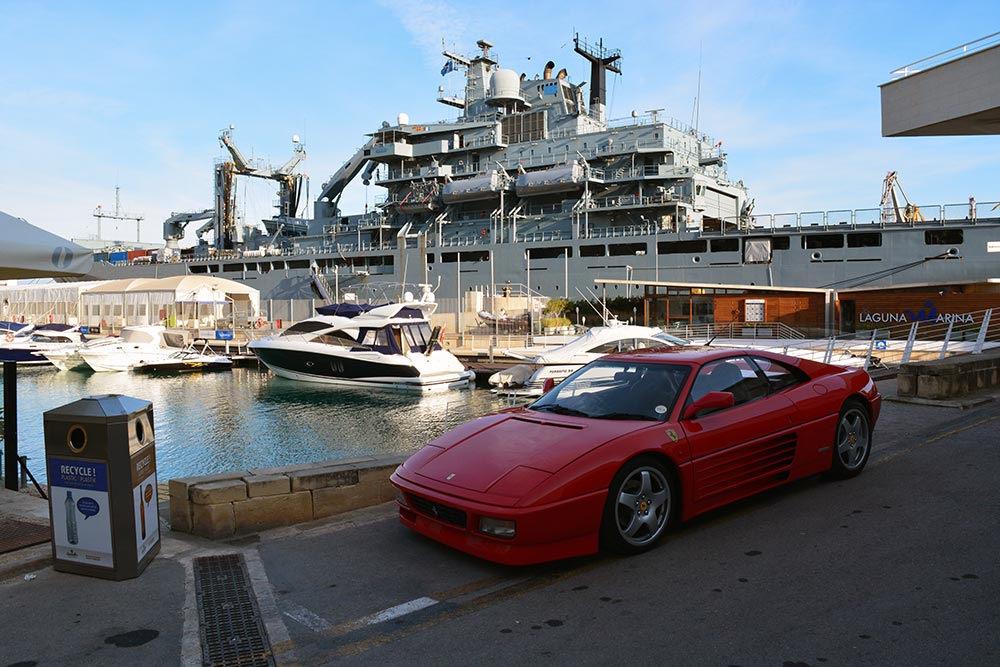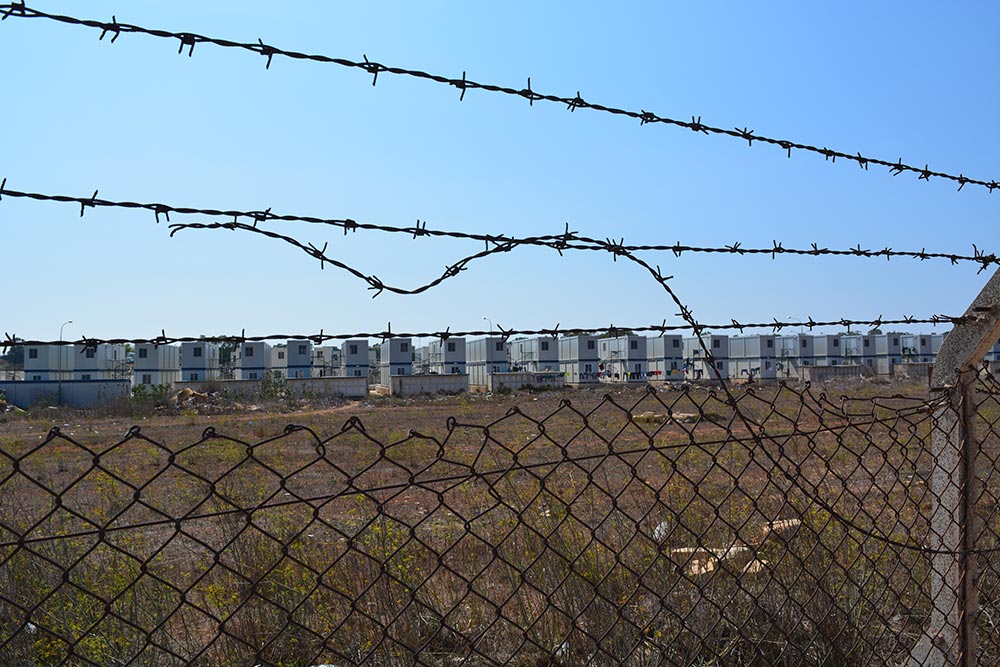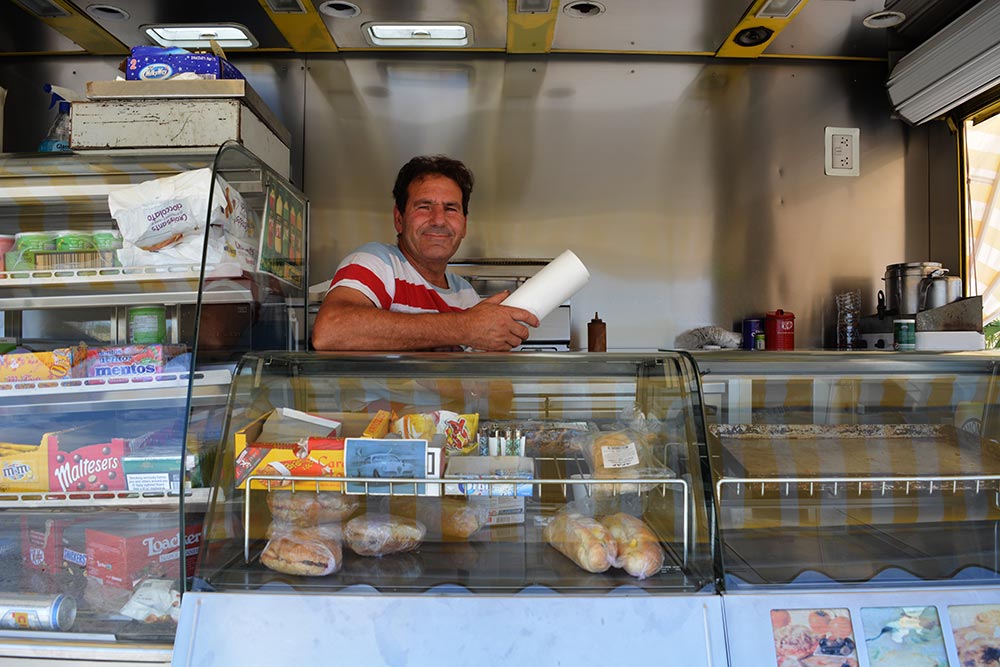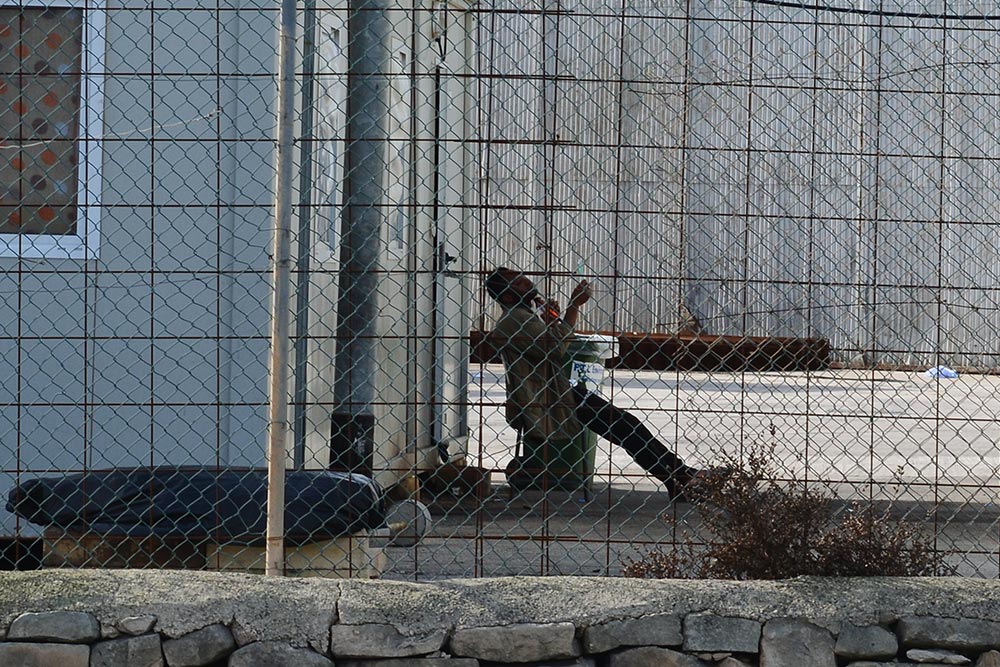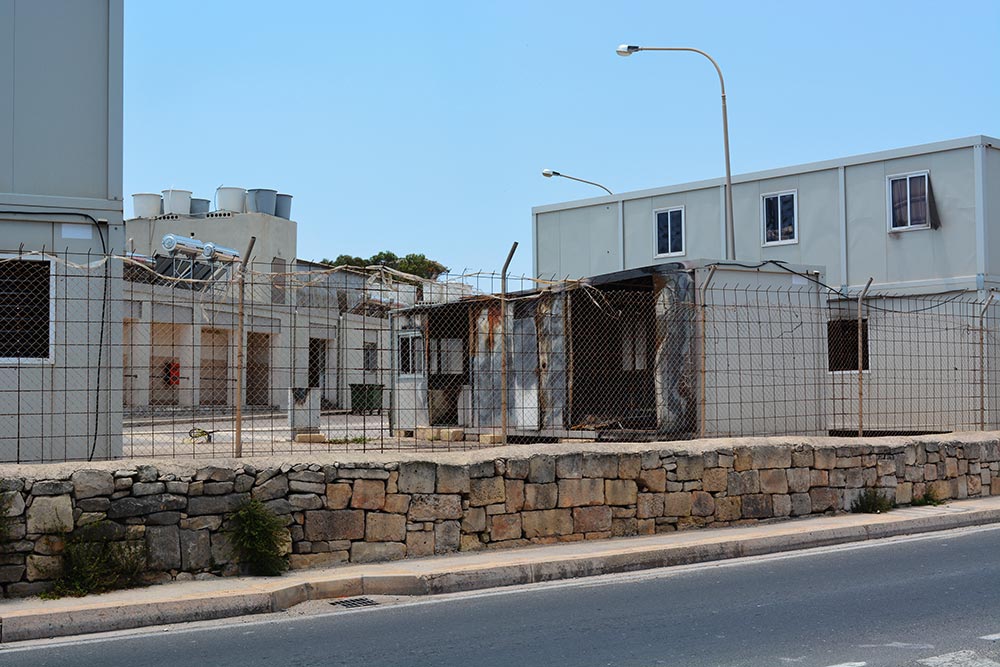/ INTRODUCTION
Identity Malta is an independent project realized between 2014 and 2016, which borrows its name from the state agency that executes administration in matters relating to passports, identity documents, work and residence permits for expatriates, land registration, and registration of public deeds.
Malta is considered a kind of Mediterranean “Alcatraz”—bad luck for immigrants who arrive here, then, some unaware there is no escape and that they will be blocked from leaving the island for up to ten years.
The Maltese authorities are of course aware that the island is locked, but the state is in no position to turn a blind eye and allow migrants to leave to go elsewhere, in “the hope” they won’t stop at another country’s border. From this island, do not try to hitch a lift on a boat, or contact smugglers as a means of escape: if you end up in Malta, your trip is over.
The island has 400,000 residents and is home to 5,000 immigrants, which appears a relatively huge effort compared to some other European countries. Yet, here in Malta, there are no slums or security issues related to migrants. The rules are very strict: those who arrive without documents are incarcerated in one of the island’s detention centres, where they will have to wait for political asylum for 18 months in what amounts to a prison. In particular, Hal Far and Hal Safi Immigration Reception Centres, both managed by the First Regiment of the Maltese armed forces, are militarized zones protected behind two fences, patrolled by the army. Among the barracks are rows of tents, each tent hosting up to 20 immigrants.
Since 2009, Doctors Without Borders have reluctantly refused to work behind the fences of Maltese asylum centres. Having worked for many years inside them, they left quite recently explaining they could no longer provide effective humanitarian medical aid there. The organization has sent several requests to the Maltese authorities to make improvements, such as to the standard of welcome and the accommodation offered (lacking most necessities), poor hygiene services, and lack of basic healthcare. Over-crowding is another issue, as is safety, promiscuity is rife, as is the dereliction (there is broken glass everywhere), and there are beds shortages. These are just some of the conditions inspectors pinpointed immediately on entering Maltese detention centres.
Identity Malta underlines some aspects and contradictions inherent to the migrants situation: usually, when we speak about immigration, the attention focuses on the host country as “suffering”: a phenomenon highlighting the risks ‒ such as rising crime, problems of integration, degradation, etc.
This project shifts focus to individual migrant identity: migrants without documents are not identified by their first name and family name but they become a number: no number, no food; no medical care; no five-euro (three times a week each person must line up to collect their five euro 'salary').
Identity Malta is a series of small actions, interventions, and performances that reflect on identity, it is an appeal that hopes to regain freedom of action and thought, which for many people has been discounted, and for others remains an unattainable dream.
The artist has realized his work primarily in Hal Far (Maltese for “Rat’s Town”), an industrial city in the south of the island with one of the largest immigration centres.
/ IT
Progetto indipendente realizzato tra il 2014 ed il 2016, che prende in prestito il suo nome dall’ente nazionale che si occupa delle funzioni e i compiti dell'amministrazione pubblica in materia di passaporti, documenti d'identità, il lavoro e permessi di soggiorno per gli espatriati, registrazione dei terreni e la registrazione di atti pubblici, atti di stato civile e di programmi di investimento individuali.
Malta è considerata una sorta di Alcatraz nel Mediterraneo, per gli immigrati una malasorte: chi arriva qui sa di non avere vie di fuga, si rimane bloccati anche per dieci anni.
Le autorità maltesi sanno che da quest’isola non si scappa, non possono fingere di girarsi dall’altra parte e lasciar andare altrove i migranti nella speranza che non vengano fermati ai confini con gli altri Paesi. Da qui non partono barconi, non ci sono scafisti cui vendersi ritentando la sorte del mare. Se finisci a Malta il tuo viaggio è terminato. L’isola ha 400mila residenti e ospita 5.000 immigrati, uno sforzo abnorme rispetto agli altri Paesi europei. Eppure qui non ci sono baraccopoli né problemi di sicurezza legati ai migranti. Le regole sono rigide: chi arriva senza documenti viene chiuso in uno dei detention centre, dove può rimanere in attesa di asilo politico fino a 18 mesi. Sono delle carceri. In particolare Hal Far e Hal Safi, entrambi gestiti dal primo reggimento delle forze armate maltesi, sono zone militarizzate. I dormitori sono chiusi dietro due reticolati controllati a vista e pattugliati dall’esercito. Tra i casermoni decine di file di tende ospitano ciascuna fino a 20 migranti.
Dal 2009 non entrano più neanche gli uomini di Medici Senza Frontiere. L’organizzazione, dopo aver mantenuto per anni un proprio presidio nelle strutture chiuse, le lasciò spiegando di non poter più svolgere la propria azione medico-umanitaria in maniera efficace. Medici Senza Frontiere ha inoltrato numerose richieste alle autorità maltesi affinché apportassero miglioramenti in termini di accoglienza nei centri di detenzione che presentano condizioni inaccettabili: ambienti malsani e promiscui, spazi sovraffollati, vetri rotti, scarsità di letti e di beni di prima necessità, servizi igienico-sanitari inadeguati, sono le condizioni che fin da subito gli operatori hanno trovato nei centri di detenzione maltesi.
Identity Malta non è una critica alla nazione di Malta, ma vuole semplicemente tentare di mettere in luce alcuni aspetti e contraddizioni inerenti alle condizioni dei migranti: troppo spesso quando si parla di immigrazione l’attenzione si sposta su chi “subisce” questo fenomeno e sui possibili rischi: aumento della criminalità, il problema dell’integrazione, il degrado, etc.
Identity Malta sposta l’attenzione sul migrante e sulla sua identità, sul suo desiderio di riavere un’identità: basti pensare che il profugo non viene identificato con un nome e un cognome, diventano semplicemente un numero. Tutto si basa sul numero: niente numero, niente cibo, niente cure mediche, niente 5 euro (Per tre volte a settimana i migranti vengono messi in fila e a ognuno di loro vengono consegnati 5 euro per vivere).
Identity Malta è una serie di piccole azioni, interventi e performance che vogliono far riflettere sul senso di identità, inteso come speranza di ottenere una libertà di azione e di pensiero, diritti che per molte persone sono scontati e dovuti, ma che per altri rimangono sogni irraggiungibili.
Gli interventi sono stati realizzati principalmente ad Hal Far (in maltese “la città dei ratti”) città industriale a Sud dell’isola che ospita il centro di immigrazione più grande dell’isola.
/ INTRODUCTION
Identity Malta is an independent project realized between 2014 and 2016, which borrows its name from the state agency that executes administration in matters relating to passports, identity documents, work and residence permits for expatriates, land registration, and registration of public deeds.
Malta is considered a kind of Mediterranean “Alcatraz”—bad luck for immigrants who arrive here, then, some unaware there is no escape and that they will be blocked from leaving the island for up to ten years.
The Maltese authorities are of course aware that the island is locked, but the state is in no position to turn a blind eye and allow migrants to leave to go elsewhere, in “the hope” they won’t stop at another country’s border. From this island, do not try to hitch a lift on a boat, or contact smugglers as a means of escape: if you end up in Malta, your trip is over.
The island has 400,000 residents and is home to 5,000 immigrants, which appears a relatively huge effort compared to some other European countries. Yet, here in Malta, there are no slums or security issues related to migrants. The rules are very strict: those who arrive without documents are incarcerated in one of the island’s detention centres, where they will have to wait for political asylum for 18 months in what amounts to a prison. In particular, Hal Far and Hal Safi Immigration Reception Centres, both managed by the First Regiment of the Maltese armed forces, are militarized zones protected behind two fences, patrolled by the army. Among the barracks are rows of tents, each tent hosting up to 20 immigrants.
Since 2009, Doctors Without Borders have reluctantly refused to work behind the fences of Maltese asylum centres. Having worked for many years inside them, they left quite recently explaining they could no longer provide effective humanitarian medical aid there. The organization has sent several requests to the Maltese authorities to make improvements, such as to the standard of welcome and the accommodation offered (lacking most necessities), poor hygiene services, and lack of basic healthcare. Over-crowding is another issue, as is safety, promiscuity is rife, as is the dereliction (there is broken glass everywhere), and there are beds shortages. These are just some of the conditions inspectors pinpointed immediately on entering Maltese detention centres.
Identity Malta underlines some aspects and contradictions inherent to the migrants situation: usually, when we speak about immigration, the attention focuses on the host country as “suffering”: a phenomenon highlighting the risks ‒ such as rising crime, problems of integration, degradation, etc.
This project shifts focus to individual migrant identity: migrants without documents are not identified by their first name and family name but they become a number: no number, no food; no medical care; no five-euro (three times a week each person must line up to collect their five euro 'salary').
Identity Malta is a series of small actions, interventions, and performances that reflect on identity, it is an appeal that hopes to regain freedom of action and thought, which for many people has been discounted, and for others remains an unattainable dream.
The artist has realized his work primarily in Hal Far (Maltese for “Rat’s Town”), an industrial city in the south of the island with one of the largest immigration centres.
/ IT
Progetto indipendente realizzato tra il 2014 ed il 2016, che prende in prestito il suo nome dall’ente nazionale che si occupa delle funzioni e i compiti dell'amministrazione pubblica in materia di passaporti, documenti d'identità, il lavoro e permessi di soggiorno per gli espatriati, registrazione dei terreni e la registrazione di atti pubblici, atti di stato civile e di programmi di investimento individuali.
Malta è considerata una sorta di Alcatraz nel Mediterraneo, per gli immigrati una malasorte: chi arriva qui sa di non avere vie di fuga, si rimane bloccati anche per dieci anni.
Le autorità maltesi sanno che da quest’isola non si scappa, non possono fingere di girarsi dall’altra parte e lasciar andare altrove i migranti nella speranza che non vengano fermati ai confini con gli altri Paesi. Da qui non partono barconi, non ci sono scafisti cui vendersi ritentando la sorte del mare. Se finisci a Malta il tuo viaggio è terminato. L’isola ha 400mila residenti e ospita 5.000 immigrati, uno sforzo abnorme rispetto agli altri Paesi europei. Eppure qui non ci sono baraccopoli né problemi di sicurezza legati ai migranti. Le regole sono rigide: chi arriva senza documenti viene chiuso in uno dei detention centre, dove può rimanere in attesa di asilo politico fino a 18 mesi. Sono delle carceri. In particolare Hal Far e Hal Safi, entrambi gestiti dal primo reggimento delle forze armate maltesi, sono zone militarizzate. I dormitori sono chiusi dietro due reticolati controllati a vista e pattugliati dall’esercito. Tra i casermoni decine di file di tende ospitano ciascuna fino a 20 migranti.
Dal 2009 non entrano più neanche gli uomini di Medici Senza Frontiere. L’organizzazione, dopo aver mantenuto per anni un proprio presidio nelle strutture chiuse, le lasciò spiegando di non poter più svolgere la propria azione medico-umanitaria in maniera efficace. Medici Senza Frontiere ha inoltrato numerose richieste alle autorità maltesi affinché apportassero miglioramenti in termini di accoglienza nei centri di detenzione che presentano condizioni inaccettabili: ambienti malsani e promiscui, spazi sovraffollati, vetri rotti, scarsità di letti e di beni di prima necessità, servizi igienico-sanitari inadeguati, sono le condizioni che fin da subito gli operatori hanno trovato nei centri di detenzione maltesi.
Identity Malta non è una critica alla nazione di Malta, ma vuole semplicemente tentare di mettere in luce alcuni aspetti e contraddizioni inerenti alle condizioni dei migranti: troppo spesso quando si parla di immigrazione l’attenzione si sposta su chi “subisce” questo fenomeno e sui possibili rischi: aumento della criminalità, il problema dell’integrazione, il degrado, etc.
Identity Malta sposta l’attenzione sul migrante e sulla sua identità, sul suo desiderio di riavere un’identità: basti pensare che il profugo non viene identificato con un nome e un cognome, diventano semplicemente un numero. Tutto si basa sul numero: niente numero, niente cibo, niente cure mediche, niente 5 euro (Per tre volte a settimana i migranti vengono messi in fila e a ognuno di loro vengono consegnati 5 euro per vivere).
Identity Malta è una serie di piccole azioni, interventi e performance che vogliono far riflettere sul senso di identità, inteso come speranza di ottenere una libertà di azione e di pensiero, diritti che per molte persone sono scontati e dovuti, ma che per altri rimangono sogni irraggiungibili.
Gli interventi sono stati realizzati principalmente ad Hal Far (in maltese “la città dei ratti”) città industriale a Sud dell’isola che ospita il centro di immigrazione più grande dell’isola.
FIRST AND SECOND CLASS
La Valletta / 1,30 x 0,30 mt - PVC on road signs
In Malta with 650.000€ it’s possible to obtain a local passport which gives the chance to travel freely around Europe (even for fiscal or terrorist reasons).
This creates an unavoidable distinction between “A level” migrants, the rich and famous ones that live Valletta as a safe haven, and “B level” migrants, those who arrive on the island on migrant boats and, consequently, get locked up in the immigration centres in inhuman conditions.
The sign post is placed in Valletta a few hundred meters from the Identity Malta government offices.
The two sign posts show in a provocatively way the two different types of “welcome” that the institutions give to who arrives: the social-economic condition of each person is what tells if Malta will be his Paradise or his Hell.
/ IT
A Malta bastano 650.000 euro per ottenere il passaporto locale e utilizzarlo come meglio si crede per muoversi liberamente in Europa (compresi motivi fiscali e terroristici). Come a dire che i migranti di serie A, quelli ricchi e facoltosi, troverebbero a La Valletta un porto sicuro, mentre gli altri che approdano sull’isola attraverso i barconi, vengono mandati nei centri di immigrazione dove possono rimanere lì per anche 10 anni, in condizioni spesso disumane.
Il cartello è stato posizionato a La Valletta a poche centinaia di metri dagli uffici di Identity Malta (dove si richiedono le pratiche per avere la cittadinanza).
Le grafiche dei due cartelli evidenziano la differenza di “benvenuto” che viene offerto ai migranti da parte dello stato e delle sue istituzioni.
REFUGEE-TRAP
Hal Far / 18 x 6 cm - mouse-trap, european passport
Hal Far in Maltese literally means “City of Rats”. A disquieting coincidence showed in this image in which an identification object (ordinary and a right for the most) becomes a bait for a mouse trap.
The intervention is placed in front of one of the two “secondary” entrances to the Hal Far immigrant centre: the migrants use this passage, which stretches through the two concrete cubes, to get in and out the camp without being noticed by the army.
/ IT
Hal Far in lingua maltese significa la Città dei Ratti.
Una coincidenza davvero incredibile e inquietante che viene rappresentata attraverso questo piccolo intervento, per sottolineare come un oggetto per molti normale e dovuto sia in realtà un’esca, una trappola per altri, coloro che vengono trattati dalle istituzioni come topi.
Il passaporto europeo è stato appoggiato su una trappola per topi davanti ad uno degli ingressi: gli immigrati passano attraverso i due cubi di cemento per entrare ed uscire dal retro dell’accampamento.
NOW WASH YOUR HANDS
Hal Far / 11,5 x 6 cm - artisanal soap, abandoned clothes, toys, documents and objects found in Hal Far.
The handmade soap is produced by following a secular saponification process, a formula that needs a long time to be completed and even more time before it is usable.
Besides the common natural and chemical ingredients used to prepare it, Hal Far soap is mixed up with other “ingredients”: the areas next to the immigration centre are open air dumps where the migrants’ waste is placed.
The long saponification process represents the migrant’s never-ending wait.
He often has to await years before he can demand his own identity; the soap name “Now Wash Your Hands” highlights how the European institutions are “washing their hands” of this uncontrollable humanitarian crisis.
/ IT
Sapone artigianale prodotto seguendo un processo secolare di saponificazione, procedura che richiede una lenta lavorazione ed una lunga attesa prima che il sapone possa essere utilizzato. Insieme agli ingredienti naturali e chimici comunemente usati per la sua preparazione, il sapone di Hal Far è stato miscelato con altri “ingredienti”: le zone adiacenti al centro di immigrazione sono discariche a cielo aperto di oggetti di scarto abbandonati dai migranti. L’artista ha tritato questi oggetti aggiungendoli alla lavorazione del prodotto. Il lungo processo di saponificazione rappresenta l’interminabile attesa dei migranti che spesso devono aspettare per anni prima di poter reclamare la propria identità, mentre il nome del prodotto sottolinea come le istituzioni europee si siano “lavate le mani” riguardo a questa incontrollabile crisi umanitaria.
THE HOLY PHONE
Hal Far / 0,65 X 0,90 mt - flowers, electric candles, abandoned phone cards
This out-of-order telephone box, which is placed just a few meters from the Hal Far containers, has lost its colour due to the constant sunlight.
The flowers and the candles have turned this telephone box into a sacred place: the phone has become a divine figure. In the past, this venerated object would have created a contact with what the migrant lives as his afterlife: the land where he comes from and from which he has escaped.
The shabby phone cards placed under the receiver are gifts, a hopeful attempt to bring the tool back to life and make the distance from their beloved ones less painful.
/ IT
La cabina telefonica è posizionata a pochi metri dai container di Hal Far, ormai scolorita dal sole che batte tutto il giorno su di essa non è più funzionante.
I fiori e i lumini trasformano la cabina in santuario, in cui il telefono diventa una sorta di Madonna, di oggetto di venerazione in quanto oggetto che tempo prima avrebbe potuto creare un contatto con l’Aldilà, ovvero la propria terra.
Le carte telefoniche abbandonate usate e usurate dal sole sono piccoli omaggi che sperano di riportare in vita quello strumento di comunicazione che renderebbe meno difficile la lontananza dalla propria terra.
€ ZERO
Hal far / 4 x 0,80 mt - abandoned clothes, stencil
The Hal Far area is full of clothes left behind by the migrants in fields and by the roadside. In some of the containers the vital space is very small and, when the migrants receive some used clothes from the Maltese associations, the old ones are abandoned on the roads. Typical souvenir t-shirt designs are placed on some of these clothes and then the t-shirts are illegally hanged over the Hal Far detention centre fences. 0€ is a special offer: just as much as the same value given to these people by the European countries, and zero as the chances they have to start a new life away from the nightmare of war.
/ IT
In tutta la zona adiacente ad Hal Far si trovano moltissimi vestiti abbandonati lungo i campi, ai bordi delle strade, etc. etc. questi vestiti appartengono ai migranti e spesso quando ricevono qualche indumento usato dalle associazioni maltesi, i vecchi vestiti vengono abbandonati lungo la strada perché all’interno dei container hanno troppo poco spazio.
Su alcuni di questi indumenti raccolti nei pressi dei centri sono stati riprodotti a stencil le grafiche tipiche delle magliette dei negozi di souvenirs, che sono state successivamente appese fuori dal centro di Hal Far con una speciale offerta: 0 euro, no Europe.
PLAYMOBIL
Hal Far / 1,10 x 0,35mt - stickers on road sign
Hal Far is a scorching desert area of the island known for its immigration centres and also because it’s home to some important companies such as Playmobil, which has its headquarters here, and even a fun fair and a museum. In front of Hal Far Tent (where thousands of people live in desperate conditions under the burning sun) there is a sign post that indicates the direction to the Playmobil Park.
The action is minimal: it underlines how the migrants are treated as living Playmobiles, dummies in the hands of the institutions and their bureaucracy. The camp site becomes a desperation fun fair, a desperation that can be seen just from a distance and strictly on the outside of the fence.
/ IT
Hal Far è conosciuta per ospitare i centri per gli immigrati, un paio di sedi di alcune aziende multinazionale e la sede della Playmobil, con tanto di parco divertimento per i bambini.
La sede della PlayMobil è situata nella zona industriale, disabitata e torrida. Di fronte all’ Hal Far Tent si trova questo cartello che indica la direzione verso il PlayMobil Park.
L’azione minimal sposta la direzione concettuale del Playmobil, in quanto i migranti vengono trattati come playmobil umani, pupazzetti in mano ai giochi dei potenti e delle loro burocrazie e l’accampamento diventa il parco giochi in cui andarli ad osservare, fuori dalla rete.
ANTHEMS
Malta International Airport / performance
The piano is situated inside the departure area of Malta International Airport, located near Luqa.
A slogan on the piano placed in the gates area invites the passengers to play it respecting its integrity.
The artist’s first idea was to leave on the instrument scores of national anthems of the main countries from where the migrants come from: Libya, Nigeria and Syria.
The gates area is a waiting zone that refers to a departure and it’s conceptually opposite to the Hal Far Centre. The first place is an indoor area which offers a journey, a chance. The second place instead is an open space that offers imprisonment.
Before realizing his performance, the artist noticed how several people played the piano just to spend some time and he decided to ask one of them (Giovanni) to play one of the national anthems.
Giovanni didn’t have time to prepare himself (he revealed he had studied piano when he was a teenager and he wasn’t prepared at all for this type of recital) but he accepted anyway. Probably no-one had recognized the anthem, listened to or even understood, just as the contemporary apathy often makes it very complicated to hear the desperate calls that come from the migrants.
/ IT
Il pianoforte si trova all’interno dell’aeroporto internazionale di Luqa, a Malta, nella zona dei gates.
Uno slogan sul pianoforte invita chiunque a suonarlo rispettando lo strumento e la sua integrità. La prima idea era quella di posizionare sul pianoforte gli spartiti di alcuni inni nazionali appartenenti alle principali nazioni da cui arrivano i migranti: Libia, Nigeria, Syria e
L’aeroporto e la zona dei gates rappresentano infatti una zona di attesa prima della partenza, prima di poter attuare la possibilità di partire verso una nuova vita, una vacanza, nuovi progetti.
È una zona diametralmente opposta all’Hal Far Center, è una zona chiusa ma che conduce alla libertà, contrapposta agli spazi aperti e desertici di hal far che nascondono invece una condizione di prigionia.
Prima di effettuare l’azione l’artista si è accorto che diverse persone suonavano il pianoforte durante l’attesa della partenza. Così si è avvicinato ad uno di loro e scoprendo che fosse anche lui italiano ha proposto di improvvisare una performance in cui il ragazzo suonasse uno degli inni nazionali.
La performance è stata improvvisata al momento e Giovanni non ha avuto modo di studiarsi prima l’inno (anche perché Giovanni aveva studiato pianoforte molti anni prima, quindi non era pronto per questo tipo di performance) ma egli ha comunque voluto aiutare l’artista a riprodurre questo inno che probabilmente nessuno avrà ascoltato, come spesso non si ascoltano le disperate richieste di aiuto dei migranti.
INVISIBLE RACE
Hal Far / abandoned tires on abandoned racing track
